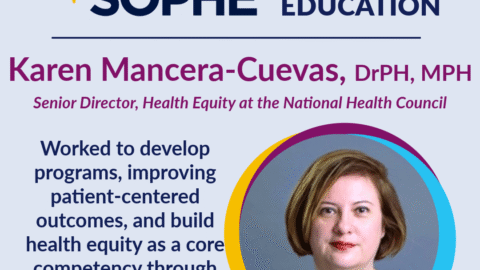
Beep… beep… beep. The sound that many of us wake up to each morning– including millions of teenagers around the United States. Glancing at the clock and seeing 6:30, 6:00, even 5:30 am on the phone screen; the reality of many students waking up for yet another day of high school, tired from another night of too little sleep. Despite the mountains of research detailing that teenagers’ natural circadian rhythm tends to skew later than adults—making them more prone to staying up late, and naturally rising later, many high schools still start before 8 am.

As so many of us know, inadequate sleep is directly correlated to numerous physical and mental health issues, especially among our growing anxious youth.
Tiffany Neal, a health educator for nearly 20 years and Master Certified Health Education Specialist, is passionate about high school start times. After gleaning extensive research detailing how teenagers’ circadian rhythms shift and the health benefits of extra sleep, she came to one conclusion: “High schools really should start later. And schools that change to start later see fantastic effects, improvements in mental health, improvements in academics, improvements in sports, injuries and on and on.”
Of course, I’ve heard many adults tell students that they should get off their phones and get more sleep. But as Neal explained, and as research makes clear, this issue isn’t really about phones or willpower. Teenagers’ brains are not ready for sleep until late at night, and early school start times cut off the opportunity to get the hours they need, regardless of screen use. Moving start times later improves alignment between the mandatory school schedule and the biological clock of teenagers. Instead of trying to alter individual students’ habits, changing the structure of schools has a broader impact.
“I could go to a high school and tell teenagers, ‘hey, you should really get more sleep. It would be good for you.’ But through advocacy if I can get an entire school district to change, I am impacting every single student, whether they talk to me or not,” Neal described. “And so, it’s such a bigger potential for impact working on that level. The mere efficiency of doing it this way struck me, so many more students impacted with so much less personal willpower needed on their part, a ripple effect.”
Guided by this sentiment, Neal has worked with parents, teachers, students, the school board, and administrators to push for later start times. Often critics will say “it’s too complicated, it’s too much work, it’s going to cost money,” she says. But she points out that other school districts and states have made it work. In fact, California has a state law that public high schools must start after 8:30 am. It might take creative solutions, but as Neal puts it, “where there’s a will, there’s a way. It’s just a matter of convincing the decision makers that it’s worth it.”
SOPHE is also in support of later school times and earlier this year adopted a Resolution in Support of Healthy School Hours.
________________________________________
This blog post was written by Josie Miller, a student at Tufts University passionate about community health, storytelling, and honoring diverse lived experiences. This piece explores how real stories don’t just inform, they create connections, expand perspectives, and help build stronger, more compassionate communities.



